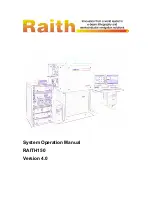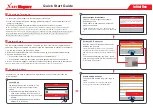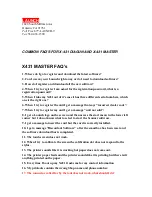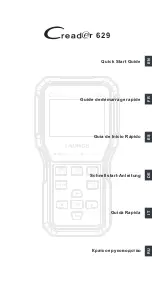
Table 5.
Torque Correction Factors for Common Lubricants Applied on Flanges
Positioning
!
WARNING
No instrument, tubing or other device whatsoever
shall circumvent the flame arrestor in such a
manner to allow a flame path to exist around
the flame element of the arrestor. When
instrumentation is installed in such a manner that
it creates a path circumventing the flame element
of an arrestor, measures must be taken to prevent
passage of flame through the instrumentation
device and/or system. Instrumentation must
be capable of withstanding the maximum and
minimum pressures and temperatures to which the
device may be exposed.
CAUTION
The flame arrestor is fitted with lugs for lifting the
element assembly during servicing operations.
These lugs are not intended for lifting the entire
unit during installation. Damage to the flame
arrestor may result from improper lifting. Heavy
units should be lifted using appropriately rated
Nylon (PA) straps rigged on the outside of the
tension studs.
The Free Vent Flame Arrestors should be positioned in a vertical
orientation. Models that have pressure taps are designed to allow
the installation of a pressure gauge determine blockage. The
pressure gauge will normally be mounted vertically.
Piping Expansions and Reductions
Adjacent to Flame Arrestors
An Enardo Free Vent Flame Arrestor may be installed in any vapor
control line that is smaller than or equal to the nominal pipe diameter
of the arrestor’s connection flanges.
Maintenance
1. Keep the element openings clean to prevent loss of efficiency
in absorbing heat. Remove the element assembly and clean
the elements to prevent the openings from becoming clogged
with particulate matter.
2. Clean the element with a suitable cleaning media (solvent,
soap, water or steam) then blow dry using compressed air.
Special care should be taken not to damage or dent the cell
openings as this would hamper the effectiveness of the unit.
3. Arrestor elements shall not be cleaned by rodding to remove
blockages, as this practice could damage the elements and
seriously impair the arrestor’s performance. If the arrestor
element cannot be cleaned satisfactorily, it must be replaced.
4. If the flame arrestor sustained a burning event, thoroughly
inspect the element for any sign of damage. Replace the
element assembly if distorted crimps are visible, particularly
near the outer periphery of the flame element. Replace gaskets
if any damage is noted.
5. For best cleaning results, a high pressure sprayer with spray
wand should be used (1500 to 3000 psig / 103 to 207 bar) to
clean the entire element surface. The spray nozzle should be
held perpendicular to the surface being cleaned to maximize
spray media penetration into the element. Alternately spray
each side of the element surface until clean.
6. The cleaning interval should be governed by the amount and
type of particulate in the system to which it is installed and
must be determined by the user. To determine the maintenance
interval the user should check the element in the first few
months of operation to find how quickly particulate accumulates
in the cells.
Note
Under no circumstance should the element bank
be disassembled from its shell for cleaning
or replacement.
7. After cleaning, thoroughly inspect the element for damage. If
damaged, replace the element. Replace the element section as
a complete assembly.
Element Disassembly
!
WARNING
Isolate gas supply and bring system to
atmospheric pressure to prevent ignitable gas
from flashing while performing maintenance.
1. Remove the top wing nuts.
2. Remove the hood and screen. It is not necessary to remove the
hex nuts located directly under the hood. These nuts are used
for positioning the hood.
CAUTION
The screen might have sharp edges. Use care
when handling.
3. Remove the upper nuts from the tensioning studs.
4. Remove the upper flange.
5. Remove the element assembly.
DESCRIPTION
COEFFICIENT OF FRICTION
MULTIPLY TORQUE VALUE IN TABLE 3 BY
Machine Oil
f = 0.15
0.75
API SA2 Grease
f = 0.12
0.60
Never-Seez
®
(Ni base)
f = 0.11
0.55
Never-Seez
®
(Cu base)
f = 0.10
0.50
Molykote
®
G-n Paste
f = 0.06
0.30
Never-Seez
®
is a mark owned by Bostik, Inc.
Molykote
®
G-n is a mark owned by Dow Corning Corporation.
5
Free Vent Flame Arrestor
North America
Only


























